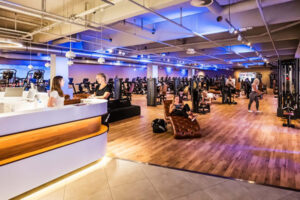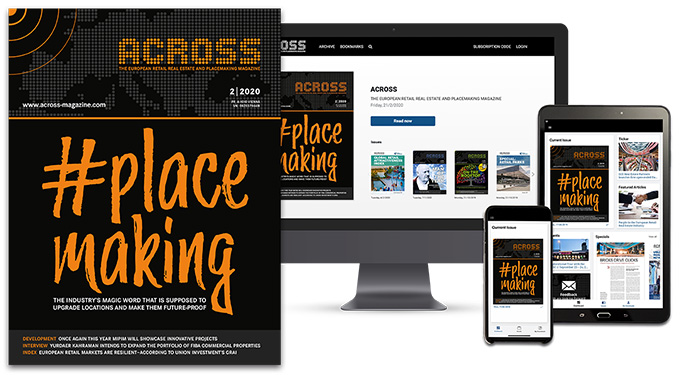ACROSS: MR. BRUGGER, MR. SCURTU, WHY IS GASTRONOMY SUCH A CENTRAL TOPIC FOR CC REAL?
MARKUS BRUGGER: Gastronomy is no longer a side issue but a very essential element of our business. It creates atmosphere, extends dwell time, and turns a center into a social meeting point. Our ambition is to vibrantly integrate our locations into their surroundings. Gastronomy is a key building block in that regard. Without it, no modern shopping center would work today.
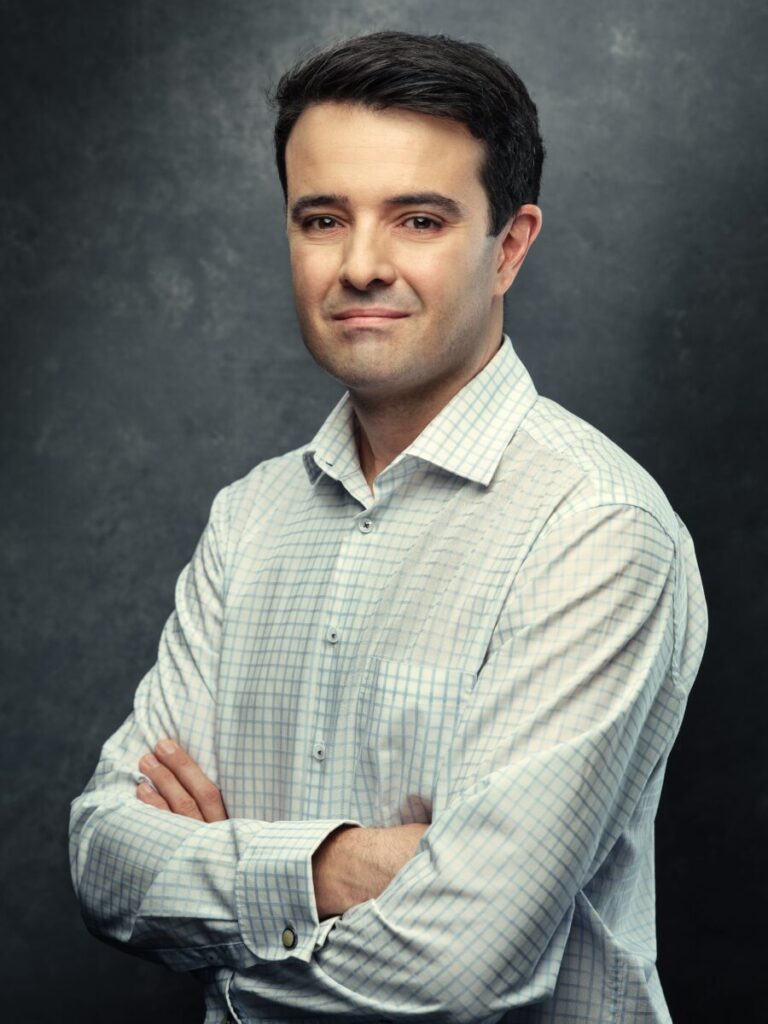
Markus Brugger
Managing Director of Asset Management at CC Real
SORIN SCURTU: Gastronomy is a means to an end: It improves the quality of stay and consumption, but it doesn’t automatically solve all problems. It’s important to understand that it is not a one-size-fits-all solution for challenges in retail, nor is there a one-size-fits-all solution for implementing a gastronomic concept. You can’t just build a food court and believe that will a location. What matters is how well the concepts are tailored to the location, the environment, and the target group.

Sorin Scurtu
Executive Director Leasing at CC Real
ACROSS: WHAT DISTINGUISHES SUCCESSFUL GASTRONOMY CONCEPTS FROM MERE FILLER SPACES?
SCURTU: Context is key. A city-center location with many offices needs fast and diverse lunchtime offers. Excellent operation is the key there. In a retail agglomeration on the outskirts, it’s more about destination character: People go there to eat because it’s an outing, not because they have to. Gastronomy concepts like L’Osteria or The Ash, for example, can draw customers to such locations, while at Wien Mitte THE MALL, for example, fast, quality service is what counts when it comes to coping with peak times. It’s the same sector, but the approach and requirements are completely different.
BRUGGER: That’s why we don’t view gastronomy in isolation, but in interplay with all other factors: entertainment, retail, and services. Only the comprehensive package makes a center attractive.
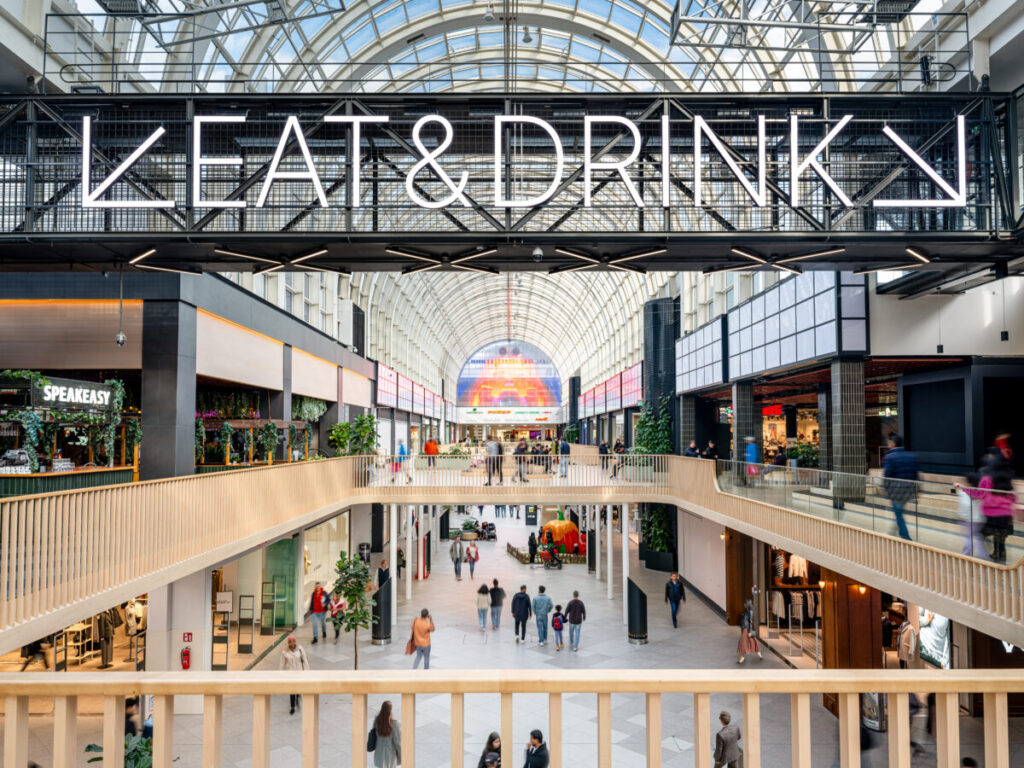
ACROSS: WHICH TRENDS ARE CURRENTLY SHAPING DEVELOPMENT MOST STRONGLY?
BRUGGER: We’ve identified four major trends:
Diversity
Customers expect variety – from Asian to Mexican cuisine, from fast-food chains to local specialties. International brands, like McDonald’s or Five Guys, are important, but without “local heroes”, the offer is neither sufficient nor does it tap into the full potential.
Digitalization
Especially ordering screens and functioning apps help to overcome staff short-ages and language barriers. At some centers, we saw sales jumps of up to 100% once digital ordering solutions were introduced.
Convenience
More and more people live in single households and have little time, yet they still want fresh food. Take-away and fast, but high-quality offers are gaining importance (both for lunch and for dinner).
Freshness and regionality
The origin of food plays a major role. Concepts like our Market Hall in Finland address this desire for transparency and regionality.
SCURTU: Speed is also a key factor. In urban areas, in particular, customers are only willing to spend 20 to 30 minutes on lunch. That massively changes the demands and challenges faced by operators.
ACROSS: WHAT ROLE DOES OUTDOOR DINING PLAY TODAY?
BRUGGER: It plays a very big one. Almost every operator asks for terraces. They extend dwell time, increase consumption, and give the center an outward face. In Croatia, it’s almost culturally ingrained, while in Austria, it’s becoming more important.
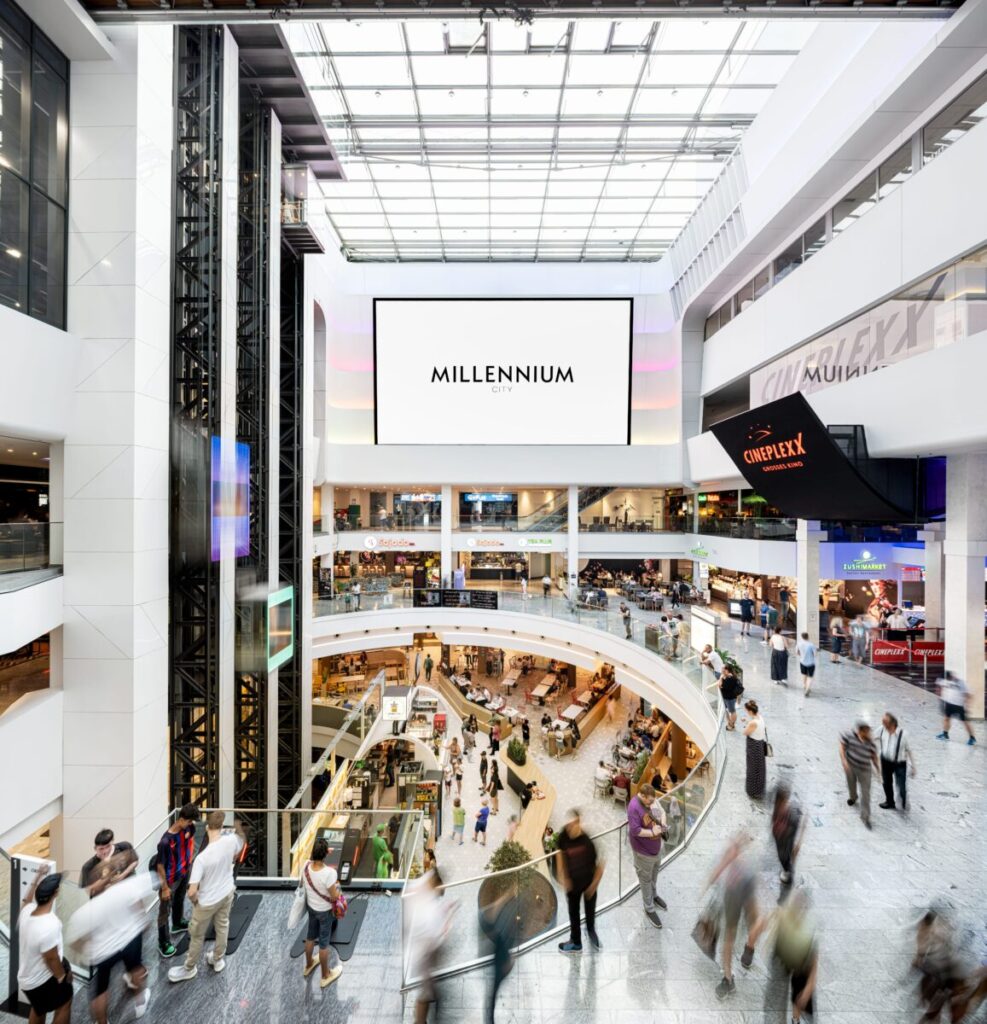
ACROSS: TO WHAT EXTENT IS GASTRONOMY ALSO A DIFFERENTIATING FEATURE FOR CC REAL?
BRUGGER: Enormously. We always develop food areas individually, work with international architects, and create a unique identity for each center. In Finland, for example, lighting design plays a central role; in Croatia, it’s generous terraces. The goal is to create places where visitors can relax and feel comfortable – beyond the hustle and bustle of shopping.
SCURTU: We focus on concepts that didn’t exist in those cities before. One highlight is the large Market Hall in Helsinki. Such steps require courage and experience, and that’s exactly what sets us apart. We don’t work according to a template, but develop tailor-made solutions.
ACROSS: CAN YOU GIVE US SOME BEST-PRACTICE EXAMPLES FROM YOUR PORTFOLIO?
SCURTU: There are two particularly striking ones:
- Millennium City, Vienna: It’s our largest food court – with enormous footfall. The culinary diversity, entertainment, and casual dining make it unique. We service office employees in the morning and at lunchtime, families in the afternoon, and cinema and entertainment visitors in the evening.
- ITIS, Helsinki: A 4,000-square-meter Market Hall is the centerpiece of a €60 million repositioning. It’s a combination of local specialties, international concepts, and community spaces, embedded in Scandinavian design.
ACROSS: WHAT CHALLENGES DO YOU CURRENTLY SEE FOR GASTRONOMY OPERATORS AT SHOPPING CENTERS?
SCURTU: There are essentially three points:
1. Staff shortages: Many operators simply cannot find teams to open locations on time. We’ve seen cases in which kitchens were fully fitted out, but remained closed for months due to insufficient staffing.
2. Inflation: Rising energy and personnel costs eat up margins.
3. Investment hurdles: Setting up new concepts is expensive, especially in the mid-market segment
ITIS – HELSINKI’S MODERN MARKET HALL
Since its opening in 1984, Itis has been one of Finland’s largest and most influential shopping centers, serving as a vibrant community anchor in the Itäkeskus district. Over the decades, the center has evolved from a traditional retail hub into a dynamic lifestyle destination that extends far beyond shopping.
The highlight of the current modernization program, completed at the end of 2024, is the 4,000-square-meter Kauppahalli market hall, the first concept of its kind to be implemented at a Finnish shopping center. Open seven days a week, more than 20 operators bring culinary diversity to life, ranging from ethnic supermarkets (Asian, Mediterranean, Ukrainian, Russian) and specialty fresh outlets, such as bakeries, butchers, fishmongers, farmers’ markets, and Italian delicatessen counters, to cozy local cafés.
The design of the hall combines culinary variety, cultural identity, and community spirit with Nordic aesthetics: warm materials, family-friendly zones, and an amphitheater for live events. Families, office workers, and center visitors alike are drawn to the authentic marketplace atmosphere. CC Real has contributed its comprehensive expertise as a real estate investment and asset management company to this project: From leasing and operations to marketing and sustainable development, CC Real has ensured that the Kauppahalli is not just a food hub but also a cultural landmark for Helsinki.
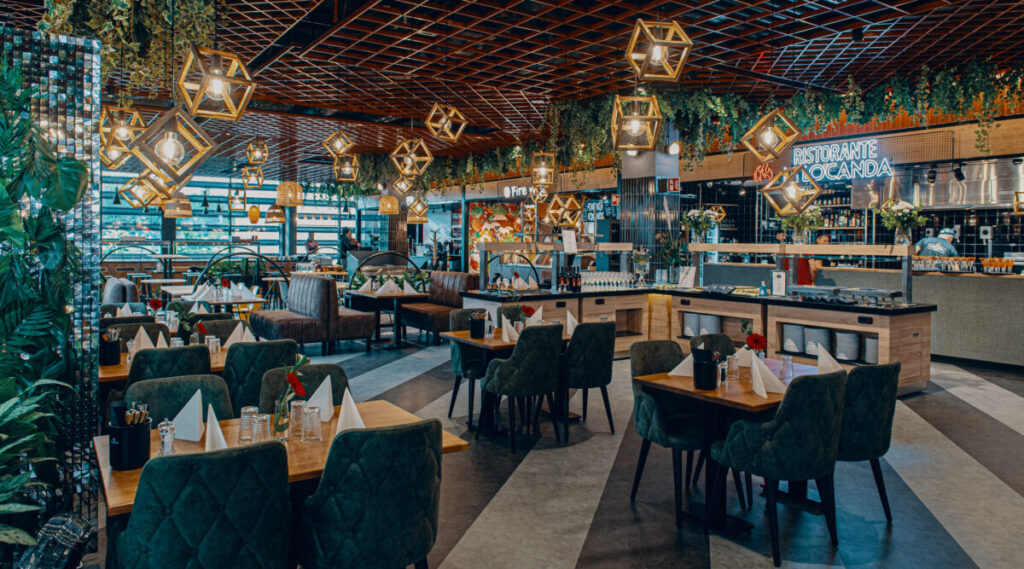
MILLENNIUM CITY – VIENNA’S CULINARY AND ENTERTAINMENT HUB
At the turn of the millennium, Millennium City in Vienna emerged as a multifunctional urban center. Since then, its gastronomy and entertainment cluster has become a fixed meeting point for visitors throughout the day, from breakfast and lunch breaks to evening dining and leisure.
Today, more than 30 operators offer an impressive range of food and beverage options. International chains, such as Five Guys, KFC, Burger King, Dean & David, Dunkin’ Donuts, and Subway, share the stage with local heroes like l’autentico, Tauber, Le Burger (SliderZ by Le Burger), Zushi Market, and Sajado. The food court alone offers around 300 seats, serving families, office employees, mall and entertainment guests, as well as an evening clientele.
Renovations and expansions have been key to the center’s success. The food court was comprehensively refurbished in 2017, while 2020 brought both an upgrade to the cinema (transitioning from UCI to Cineplexx) and an expansion of the entertainment zone with the Flip Lab trampoline park. More recently, the family and adult entertainment areas underwent complete renovations in two phases (summer 2024 and summer 2025), complemented by the addition of two state-of-the-art medical centers in spring 2025.
This holistic approach, combining gastronomy, cinema, and entertainment, has significantly strengthened customer loyalty. Visitor numbers now exceed six million annually, with turnover increasing by 40% and average dwell times extended considerably. The success is also owed to the dedicated management of the common seating area, including cleaning, laundry, and security staff, which ensures seamless service during peak hours at lunch, in the evenings, and on weekends. With its mix of global names, beloved local concepts, and continuous reinvestment, Millennium City demonstrates how gastronomy, leisure, and innovative space management can elevate a shopping center to a thriving all-day destination.
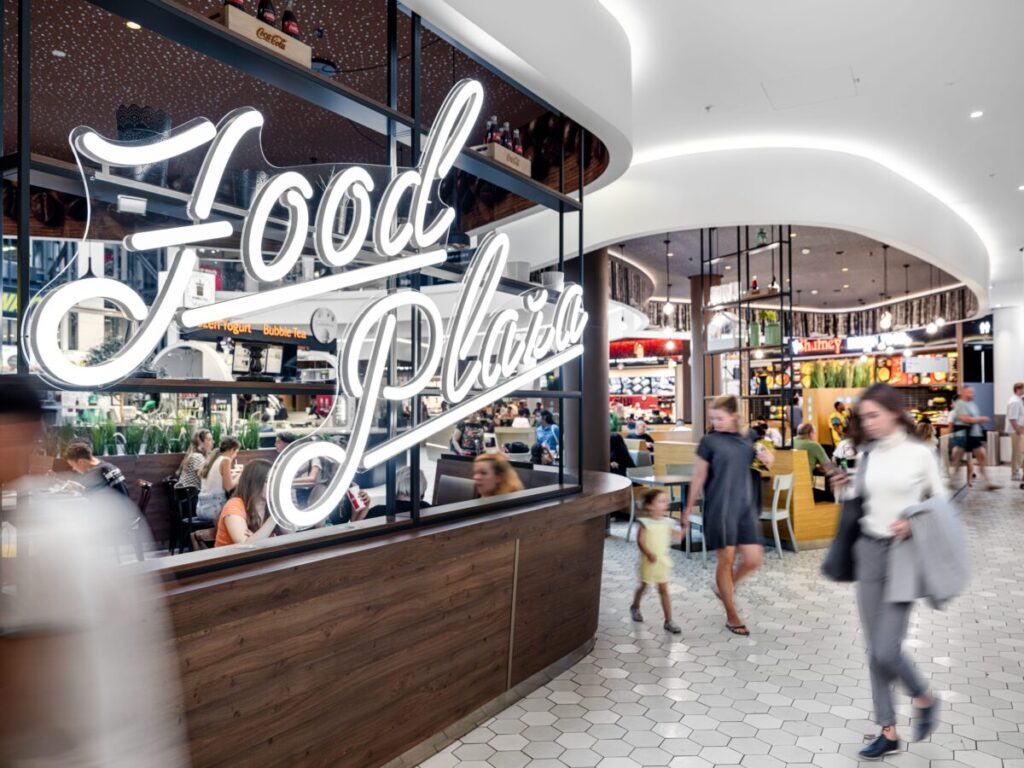
BRUGGER: Like previously mentioned, digitalization can often help here. Ordering screens can jump in for missing staff and reduce language barriers. In fast food, sales jumps are immediately measurable. It’s more difficult in casual dining, where guests expect personal service.
ACROSS: WHAT ABOUT OPENING HOURS, WHICH DIFFER FROM RETAIL OPENING HOURS?
SCURTU: At modern mixed-use locations, they’re not a big issue, since entertainment, hotels, and fitness ensure longer hours anyway, and the areas can be opened separately. The center can, therefore, be used longer and more diversely. It’s more difficult at older centers, where you’d have to open the entire building to operate just a few restaurants. Overall, the challenges described before are much more relevant.
ACROSS: CAN GASTRONOMY TAKE OVER THE ROLE OF CLASSIC FASHION ANCHORS?
SCURTU: Clearly, it cannot. Even though the percentage of gastronomy has increased in recent years, we see limits to a sustainable tenant mix. Gastronomy is important, but it’s no replacement for fashion or big-box retailers. Every sector must solve its own challenges. Gastronomy is a differentiating factor, but not a universal remedy.
ACROSS: WHERE DO YOU FIND INSPIRATION FOR NEW CONCEPTS?
BRUGGER: We regularly look at markets in London, Amsterdam, and Rotterdam. Many exciting concepts are emerging there. At the same time, we are constantly in dialogue with restaurateurs and franchisees. Often, operators come to us with new ideas; we visit them, taste the food, observe the processes, and test whether it fits for our locations.
ACROSS: FINALLY, WHAT SETS CC REAL APART FROM OTHER OPERATORS?
SCURTU: We don’t follow a standard blueprint. Each center is a unique project, locally rooted and hands-on managed. We try new things, take calculated risks, and adapt continuously. We see mistakes as opportunities for improvement. That’s why gastronomy is not just an add-on for us, but a central element of our strategy.
BRUGGER: In the end, however, only the customer counts. Our ambition is to provide the right offer at the right time and in the right place. That’s the only way to ensure a center’s long-term success.
Credit for all images: CC Real


